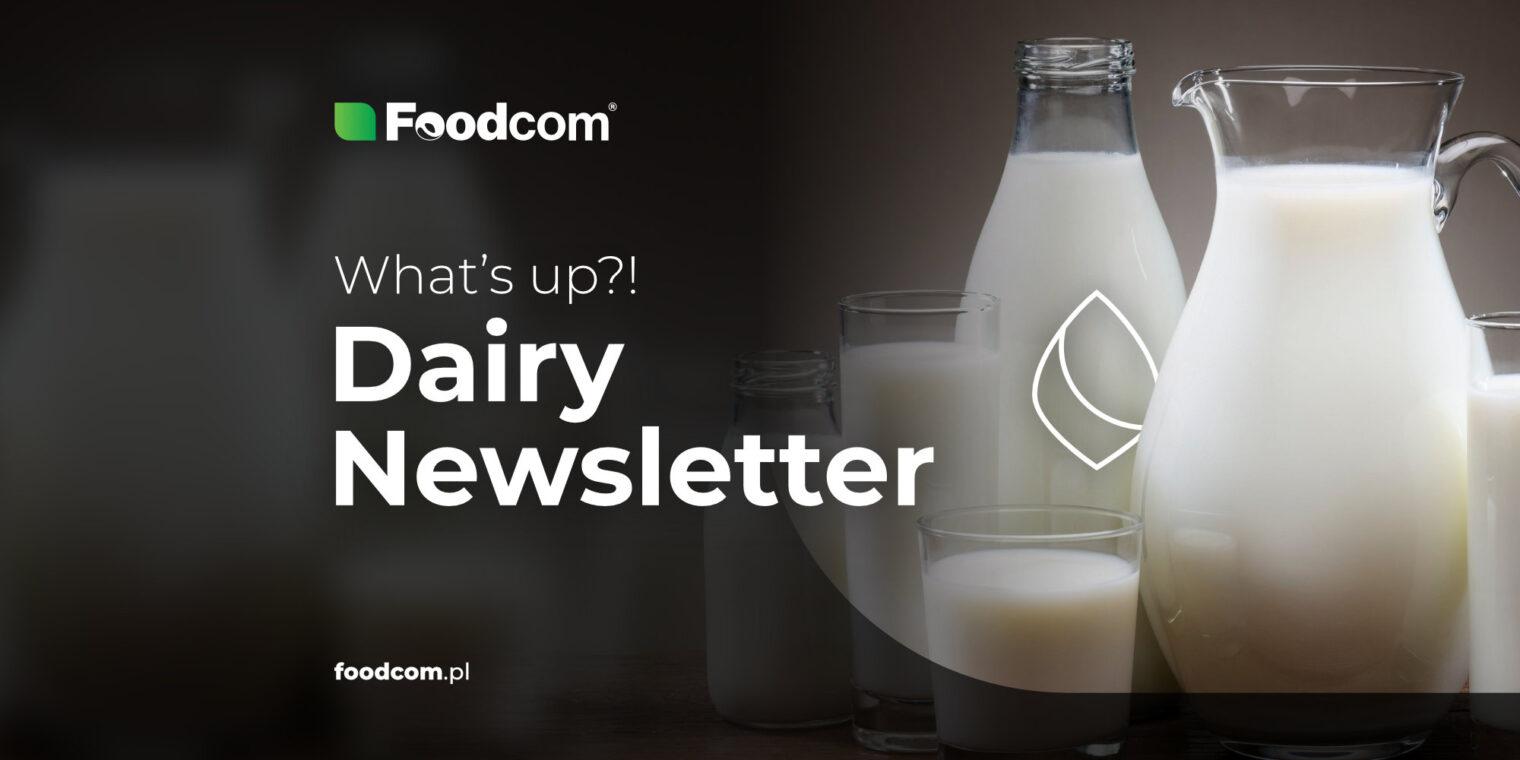Long time no see, right? Do not worry, your favorite legenDAIRY newsletter is back! We have been away for a while (well, maybe a little longer), but we are back, as always, with information on everything you need to know about the latest developments in the dairy market, in an accessible and very entertaining format.
It’s difficult to talk about big events or changes in the dairy sector or the industry in general right now, as many producers, distributors and end-users are just getting warmed up after the break. Nonetheless, we have compiled the most important events of the last few weeks in relation to specific products.
The beginning of the year is a time of many forecasts and predictions. While we do not have a crystal ball on our equipment, the events of the last 12 months and the current situation allow us to observe certain trends. The future of the dairy sector will almost certainly be determined by climate and extreme weather events, consumer trends, including the move away from animal products toward veganism and vegetarianism, inflation, energy costs, packaging prices, and technological developments. One thing is certain: there will be a lot going on! It pays to stay informed and reach for reliable sources of information, but you probably already know that, after all you are reading our newsletter right now…
Skimmed Milk Powder
Although gas prices have already returned to pre-Ukraine war levels, many producers argue that the cost of drying the commodity remains high. Presently, customers are buying only for current needs, and few are signing contracts for the next months and quarters. The eyes of all producers are on China. They wonder if the big player will finally return to the market with offers to buy.
Butter
Butter has received modest attention in recent weeks, although the not-so-large amount offered from the cheaper Christmas cream was quickly absorbed by the market. As with Cream, Polish producers are trying to maintain a stable price and are not reducing their offerings as quickly and eagerly as in the West.
AMF
Mainly European buyers have been out of the office since the holidays. They are expected to return to trading in the coming weeks, especially since manufacturers are already planning Easter production.
Gouda/Edam
For Cheese, market sentiment remains unchanged, with prices easing each week. It is difficult to find a buyer for larger quantities. One might ask if this is even a commodity market anymore…
Cream
Spot milk prices are down slightly, which affects most dairy products, especially liquids. Demand is also down a bit, which is typical for this time of year. What surprises many is that the Cream in Poland has increased slightly recently.
What else?
Europe
The French dairy herd will shrink by 441,000 head by the end of the decade
The ministry’s agricultural census, conducted every 10 years, shows that more than a quarter of French dairy farms have closed in the past decade. This trend is expected to continue over the next ten years. Reasons cited for this situation include rising labor and raw material costs, as well as premiums paid by farmers and the increasing average age of farmers combined with low replacement rates. The future of the French dairy sector does not look very optimistic for now.
Anyone surprised by the high prices of dairy products in Poland? Certainly, not us
Last year, dairy processors had to deal not only with high prices of raw materials, as basically, everything became more expensive. Prices for cardboard packaging increased by more than 50%, for transport pallets by as much as 170%, and for packaging films by 60%. The extreme increase in energy and gas prices probably does not need to be mentioned. Everyone is eagerly waiting to see what the new year will bring in terms of production costs.
Amalthea, a supplier of goat cheese and organic cow cheese, is using Infor’s integrated artificial intelligence solution
The goal is to improve cheese quality and yield, strengthen customer loyalty, and increase sustainability. For every percent increase in productivity, Amalthea expects to save about €500 000, which can be invested in further business development. Well, those would be nice savings, there’s no denying that.
The Americas
The USDA forecasts that global milk production will increase in 2023
The increase is expected to be 1.0%. In 2022, there was a 0.2% decline. Milk production of the world’s top five dairy exporters is expected to remain at a similar level, with a 1% decline in EU supplies. Could it be that 2023 will actually be better than last year?
Representatives of the Argentine dairy industry say the sector is in a difficult situation
The difficult conditions of the past year, especially the extreme drought, have led to a 13% increase in production costs. The tough situation is particularly threatening to small dairy farms, which account for more than 60% of all dairy farms in the country. One can only hope that this time it will be ‘new year, new (better) situation,’ but so far, this does not seem to be the case.
American Securities LLC announced that it has entered into a definitive agreement to sell Milk Specialties Global
Milk Specialties Global is an ingredient manufacturer focused on processing raw dairy products, such as milk and liquid whey, into value-added functional ingredients for various emerging end markets. The buyer is Butterfly. Terms of the transaction were not disclosed. The transaction is expected to close in the first quarter of 2023.
Asia & Oceania
Australian consumers have recently experienced a significant increase in dairy product prices
Given the difficult economic situation, their ability and willingness to spend on products in this category have decreased, so demand has declined. Fingers crossed that the beginning of the year will bring stabilization in this regard.
Six new dairy farms are to be opened in the West Kazakhstan region
The aim of the project is to reduce the import of dairy products from Russia and Belarus. Construction of the planned farms is to begin this year and last for two years. Well, this is undoubtedly an interesting New Year’s resolution.
More and more dairy farmers in Australia are considering investing in an automatic milking system (AMS)
One in three dairy farmers in the country are considering installing an AMS when it comes time to replace or upgrade their barns. So far, the percentage of dairy farmers using an AMS has been lower than expected, but recently the number has increased. The smallest system in Australia has 2 robots and milks 100 cows, while the largest system milks 900 cows with 16 robots. Need we add that the future is now?







